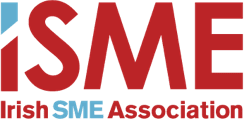Nothing in the way that small and medium enterprises are treated by government in this country surprises us here at ISME. As the national representative body for smaller businesses we have been working to keep the State’s hands out of the pockets of struggling companies for years as the State tries to find more exotic ways of taxing business and employment to near death.
But we are sometimes taken aback by the temerity of both Bord Gáis and the ESB (both government owned) in making sure that we continue to have some of the highest energy costs in Europe – remember their costs are effectively an indirect tax. As State owned companies their commercial interest is not in serving their customers but in keeping their political masters off their respective backs.
When the State ran out of money, due in no small part to lack of proper oversight by the State itself, the State came up with levies, taxes and charges to pay for its own self-made mess. Business had to help clean up that mess via taxes, a mess not of its making.
In trying to get more funds into the State’s coffers the ESB and Bord Gáis have been told to pay a ‘special levy’ (spelt HIGHER CUSTOMER CHARGES) to the government. So Bord Gáis is borrowing €300m to pay this dividend. Similarly, the ESB which was to sell off assets to pay the dividend is also to borrow the money – €203 million in their case.
As the Irish Times said, “In both cases, a State entity is borrowing – using a private facility – to lessen by the same amount the State’s borrowing requirements. This only makes sense for taxpayers if the firms borrow at a lower rate than the Government, which can buy 10-year money at just over 2 per cent. Otherwise, it is just financial engineering, cycling Government borrowings through two State energy companies as flags of convenience.”
According to the Irish Independent the ESB was borrowing long term money at just short of 3.5%. And that’s the difference. The State is making the State borrow money at a higher than the State itself can borrow at. Go figure.
Oh, and SME’s, prepare yourselves to pay for the difference.


